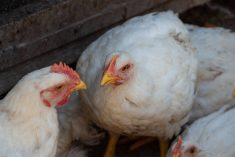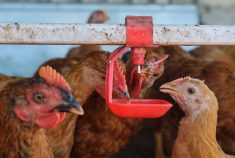A University of Guelph scientist will put over $1 million in post-doctoral funding toward stem cell research to treat horses for cartilage injuries, with potential benefits for horses and humans alike.
Thomas Koch has been awarded a three-year fellowship from the Danish Agency for Science, Technology and Innovation, the university’s Ontario Veterinary College (OVC) announced Wednesday.
Koch, as a graduate student in Guelph’s department of biomedical sciences, began using stem cells from foals’ umbilical cord blood as a treatment to repair damaged cartilage.
The Danish agency’s funding will back a collaborative effort including Guelph, a human orthopedics lab at Denmark and researchers from Canada, Sweden and the U.S.
Read Also

U.S. livestock: Chicago cattle, hogs rise
Chicago cattle and hog futures closed higher on Thursday. Most-active February live cattle futures settled at 230.950 cents a pound,…
The funds “will allow us to carry out the first controlled studies on live animals using the protocols developed here at Guelph for obtaining stem cells from equine cord blood,” said Koch, who earned his DVM at the University of Copenhagen.
It also affords recognition to horses as the “premier animal model” for such stem cell research, he said.
“Equine joints are similar to human joints in some respects such as joint thickness, and horses are also prone to spontaneous athletic injuries,” he said, meaning the work may have applications not only in equine medicine but human medicine as well.
“Regenerative potential”
Koch and Dean Betts of the University of Western Ontario together established a protocol for isolating stem cells from equine cord blood samples, a “non-invasive and simple” process compared to obtaining cells from embryos or bone marrow, OVC said.
Koch, Betts and their collaborators on this project are already able to differentiate the stem cells into unique cell types — for example, chondrocytes, the building blocks of cartilage.
Among the goals for this research are to refine the techniques to identify the characteristics of cells that have the most therapeutic potential.
The research team will use mesenchymal stem cells, which grow into connective tissue, muscle and bone, in combination with engineered grafts made of cartilage and bonelike material, to treat cartilage injuries in the stifle joint, the horse equivalent to the human knee.
“The goal is to screen these cell lines and pick the ones that are really good at creating cartilage in the lab and then test their regenerative potential in live horses at OVC and Cornell University,” Koch said in OVC’s release.
“If we can make it work in horses, then there is the potential to apply the same principles to make it work in people, too.”













